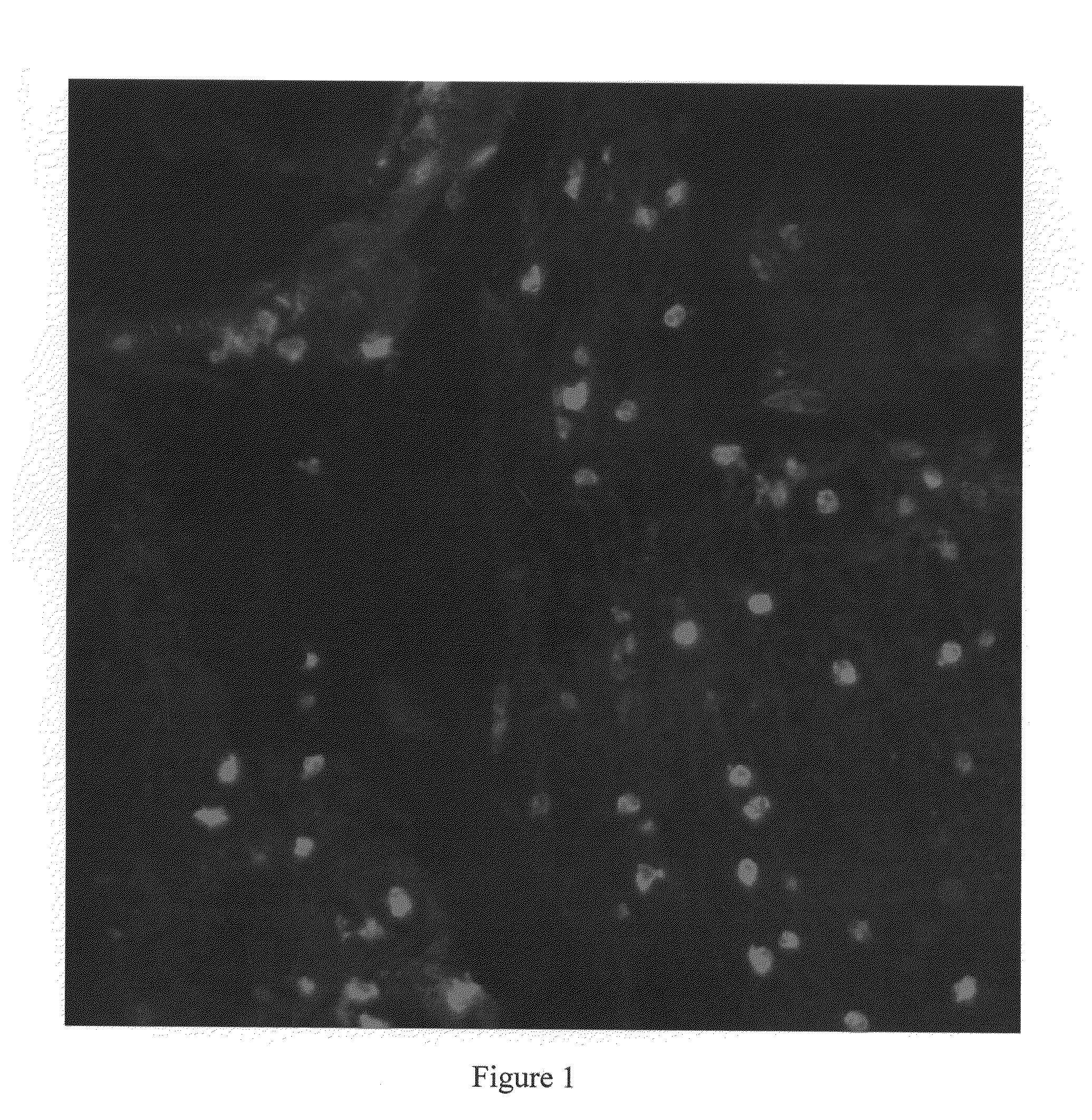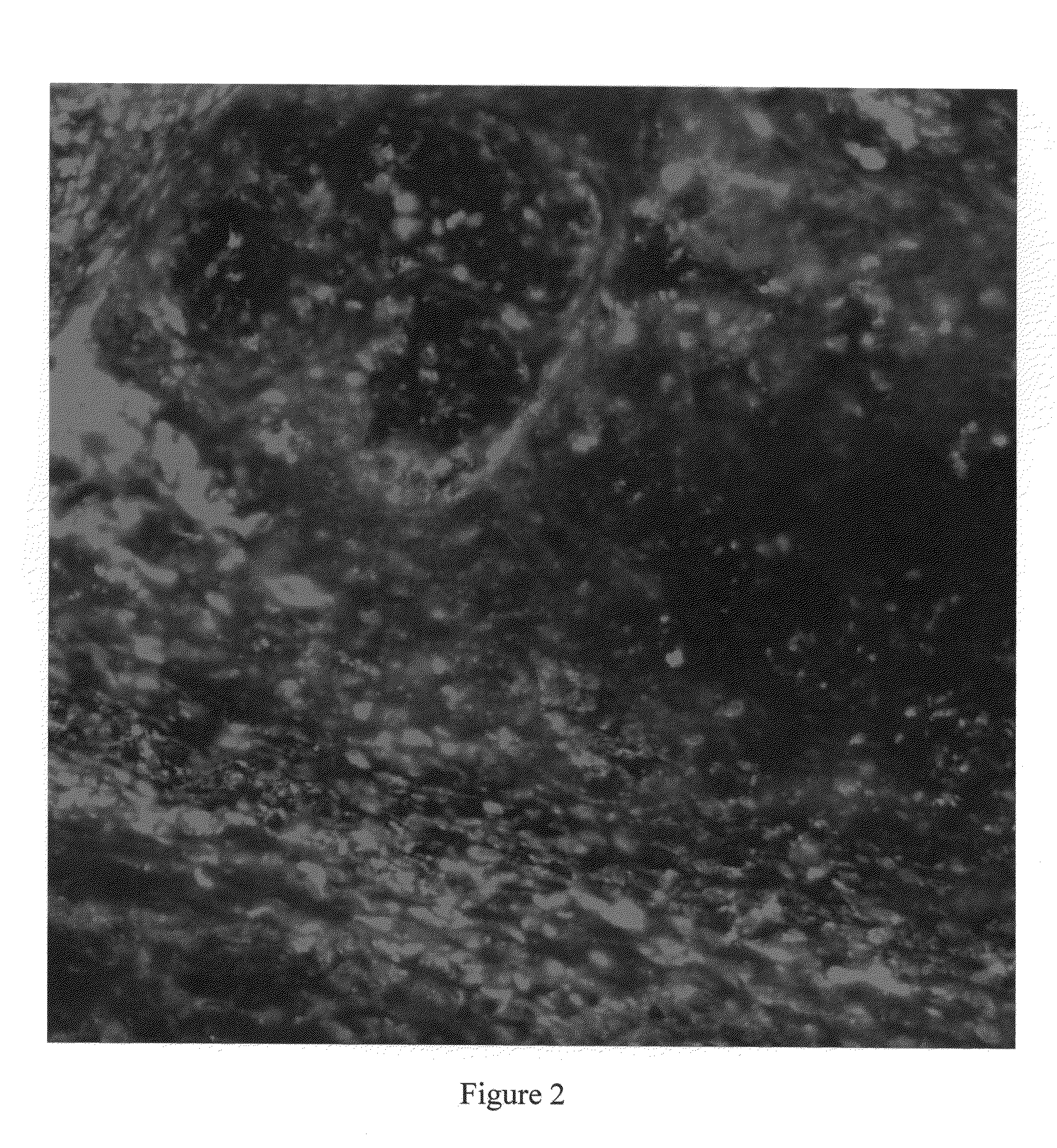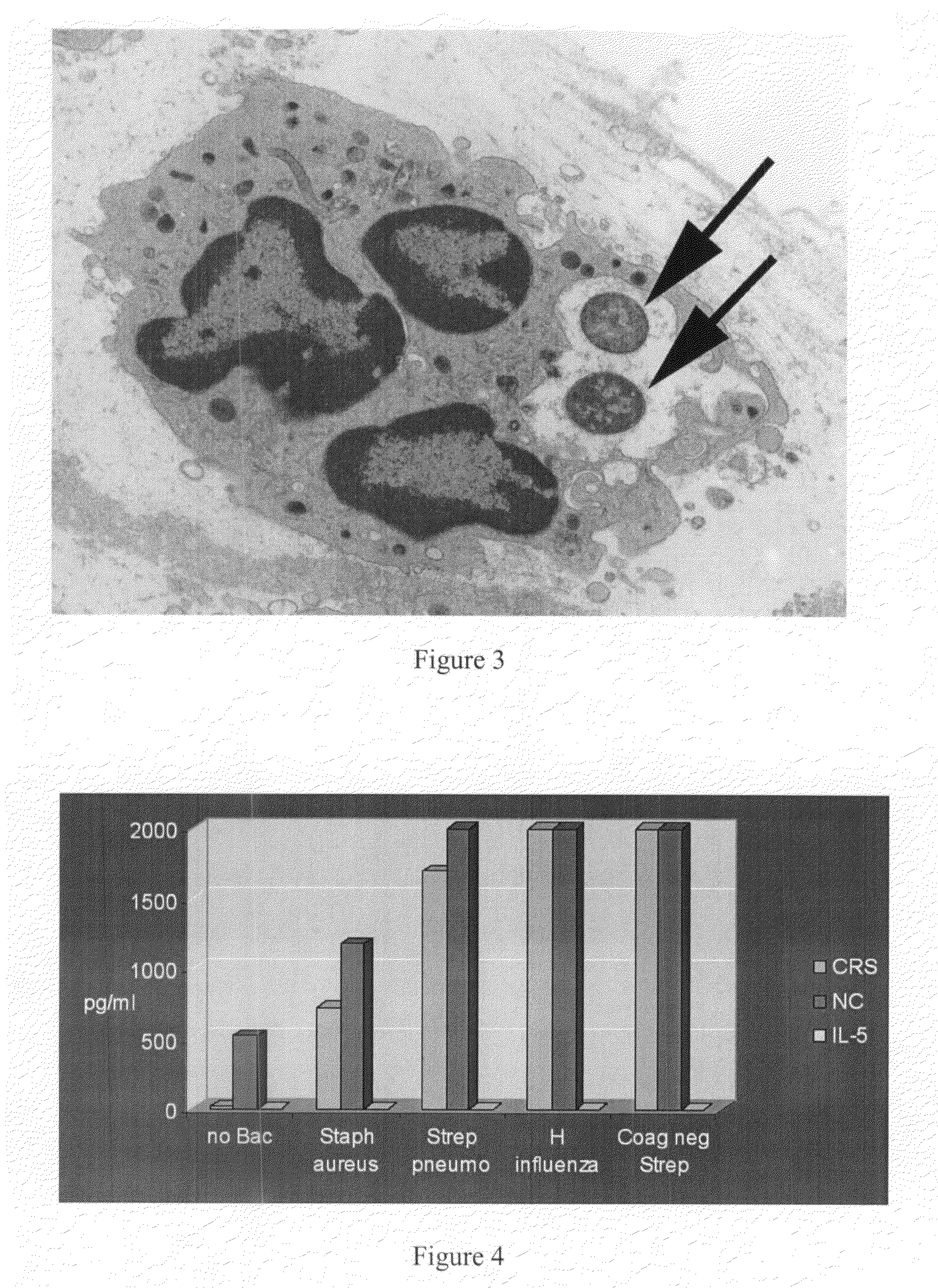Detecting a bacterial process in chronic rhinosinusitis
a technology of rhinosinusitis and bacterial process, which is applied in the field of rhinosinusitis, can solve the problems of inability to accurately predict the bacterial basis of rhinosinusitis, the inability to find this reliable predictor of bacterial sinusitis, and the breakdown of cells
- Summary
- Abstract
- Description
- Claims
- Application Information
AI Technical Summary
Benefits of technology
Problems solved by technology
Method used
Image
Examples
example 1
[0029]In this example, detection of free neutrophil granule content marker, NE, was carried out in a nasal tissue sample and a mucus sample. Immunoflorescent localization was carried out using a rabbit anti-human antibody to NE. A second fluorescein labeled antibody was used for visualization. The results are shown in FIGS. 1 and 2. Staining inside the cells can be seen in the nasal tissue sample indicating that the neutrophil granules are intact and the contents have not been released into the environment. However, in FIG. 2, the staining is extracellular indicating degranulation and release of the neutrophil granule contents into the mucus.
example 2
[0030]This example demonstrates that neutrophil response is mounted when the nasal epithelium encounters bacteria. IL-8 was measured in human immune cells (peripheral blood mononuclear cells, PBMCs) after stimulation (incubation) with different bacterial culture extract containing bacterial antigens. The key cytokine for the recruitment of neutrophils is IL-8, the key cytokine for the recruitment of eosinophils is IL-5. The results are shown in FIG. 4. After incubation, no IL-5 was produced by patients and healthy controls, but large amounts of IL-8 were produced. This demonstrates that a neutrophilic, but not an eosinophilic, inflammation is produced by the human immune system when it recognizes a bacterium or bacterial products. Detecting substances which are important in the recruitment of neutrophils into the tissue, or neutrophils or its products, demonstrates that bacteria or its byproducts have induced the inflammation.
example 3
[0031]This example describes the processing of mucus samples from patients and analysis of the samples for the presence of free form of NE as a marker for degranulation of neutrophil. Nasal secretions were obtained under endoscopic guidance by using a sterile sinus secretion collector (Xomed Surgical Products, Jacksonville, Fla.). Each secretion specimen was extracted by adding twice the volume of 0.9% NaCl, vortexing 3 times for 10 seconds, and centrifugation at 40000 g for 20 minutes. The supernatants were stored at −20° C.
[0032]As a marker of neutrophilic degranulation, the concentration of elastase in the supernatants was quantitated by the ENZCHEK® Elastase Assay Kit (Molecular Probes, Eugene, Oreg.), following the procedure recommended by the manufacturer. Molecular Probes ENZCHEK® Elastase Assay Kit (E-12056) contains soluble bovine neck ligament elastin (DQ™elastin) that has been labeled with BODIPY® FL dye so that the conjugate's fluorescence is quenched. The non-fluorescen...
PUM
| Property | Measurement | Unit |
|---|---|---|
| volumes | aaaaa | aaaaa |
| volumes | aaaaa | aaaaa |
| volumes | aaaaa | aaaaa |
Abstract
Description
Claims
Application Information
 Login to View More
Login to View More - R&D
- Intellectual Property
- Life Sciences
- Materials
- Tech Scout
- Unparalleled Data Quality
- Higher Quality Content
- 60% Fewer Hallucinations
Browse by: Latest US Patents, China's latest patents, Technical Efficacy Thesaurus, Application Domain, Technology Topic, Popular Technical Reports.
© 2025 PatSnap. All rights reserved.Legal|Privacy policy|Modern Slavery Act Transparency Statement|Sitemap|About US| Contact US: help@patsnap.com



